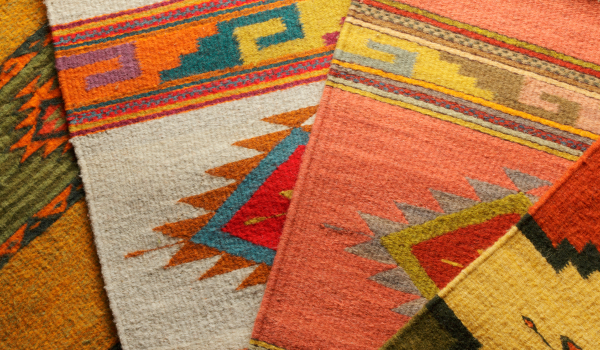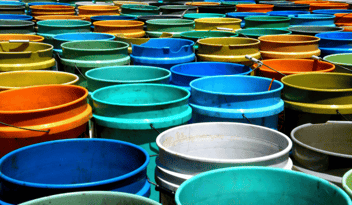The Original American Enterprise

Native American Trading Posts
Today is the first day of American Indian Heritage Month, a time to celebrate the rich cultures, traditions, and histories of Native American, Alaska Native, Native Hawaiian, and affiliated Island communities. One of the aspects of Native American heritage that is often overlooked is the role of trading posts in the economic and social development of Native peoples. Let's explore how trading posts were not only places of commerce, but also sites of cultural exchange, innovation, and entrepreneurship.
Trading posts were establishments where goods were exchanged between different groups of people. They have existed for centuries in various regions of the world, but they became especially prominent in North America after the arrival of European colonizers. Trading posts were often located near rivers, lakes, or trails that facilitated transportation and communication. They served as hubs for trade between Native Americans and Europeans, as well as among different Native nations.
These posts offered a variety of goods that were in high demand by both Native and non-Native customers. Some of the most common items were fur, leather, metal tools, weapons, beads, cloth, tobacco, alcohol, and food. Trading posts also provided lodging, banking, mail delivery, and legal assistance. Some trading posts even had schools, churches, or newspapers.
Not only were they places of economic activity, but also of social and cultural interaction. Native Americans and Europeans learned from each other's languages, customs, beliefs, and technologies. They also formed alliances, friendships, marriages, and families. Trading posts were often sites of conflict and negotiation, as different groups competed for resources, influence, and territory.
Indigenous Innovation
Trading posts also fostered a spirit of innovation and entrepreneurship among Native Americans. Native Americans adapted to changing markets and customer preferences by creating new products or improving existing ones. They also developed their own marketing strategies to attract and retain customers. Some Native Americans became successful traders, merchants, or brokers who amassed wealth and power. A few examples of Native American entrepreneurs who used trading posts to launch or expand their businesses are:
- Maria Martinez, a Pueblo potter who revived the ancient technique of black-on-black pottery and sold her works to collectors and museums around the world.
- Charles Loloma, a Hopi Pueblo artist and jeweler who combined traditional materials with modern designs and created a distinctive style that appealed to celebrities and fashionistas.
- Fred Harvey Company began with the famed "Harvey House", a hospitality business that operated hotels, restaurants, and souvenir shops along the railroad routes in the Southwest. The company hired Native American artists and craftsmen to produce authentic and high-quality goods for tourists. Author Stephen Fried wrote about him in "Appetite for America".

- Navajo Nation Gaming Enterprise, a tribal corporation that operates four casinos in Arizona and New Mexico. The casinos offer gaming, entertainment, dining, and lodging options that showcase Navajo culture and history.
As you can see, trading posts were much more than just places to buy and sell goods; they were an integral part of Native American history and heritage. They demonstrate how Native Americans were not passive victims of colonization, but active agents of change and adaptation; places where they expressed their creativity, ingenuity, and entrepreneurial spirit. They contributed to the economic and social well-being of their communities and enriched the cultural diversity of our nation. Trading posts were the original American enterprises that shaped the continent's destiny.
Support Native Entrepreneurs Today
Happy American Indian Heritage Month! I hope you enjoyed learning about the fascinating history and legacy of trading posts. You can support Native American entrepreneurs today by visiting their websites or online stores and buying their products or services. You can also follow social media or subscribe to newsletters to stay updated on the latest offers and events. Here are a few of my favorites:
-
Maese Art - Eileen Jimenez is an indigenous queer artist living in the occupied Duwamish Territory (Seattle, WA). Her art showcases the aesthetics of her Mexican and Otomi stories and is in honor of her mother, Maira Crus Jiminez. Follow her on Instagram or shop on Etsy.
-
Ora Louise Boutique - Hillary Frost of the Southern Ute Indian Tribe named her shop after her Great-grandmother and Grandmother carrying on the teaching of care and kindness towards the community. She carries jewelry and handcrafted items made by her family and friends and teaches other Native American entrepreneurs how to run an E-commerce store and digital marketing skills. Follow her on Instagram or shop online.
- Purewild Co. - founded by Cindy Convery of the Choctaw Nation offers wild-harvested collagen, "the cleanest wild marine collagen products in the world" supplements and drinks as well as wine. Follow on Instagram or shop online.
Thank you for reading this edition of Meaty Marketing! If you liked it, please share it with your friends or leave a comment below. I would love to hear your feedback or suggestions for future topics.`
.png?width=1000&height=200&name=ASOM%20Marketing%20Logo%20(1000%20x%20200%20px).png)


